Biometric Security and Privacy - What You Should Know
In today's digital age, we find ourselves surrounded by an array of security measures designed to protect our personal information. Among these, biometric security has emerged as a game-changer, leveraging our unique physical traits to enhance identification and authentication processes. But as we embrace these advanced technologies, it's crucial to also consider the implications they have on our privacy. This article will explore the intricate relationship between biometric security systems and privacy concerns, shedding light on their benefits, potential risks, and best practices for safeguarding our personal data.
So, what exactly is biometric security? At its core, it refers to systems that utilize unique physical characteristics for identification and access control. Think of it as using your body as a password—something that is inherently yours and, ideally, impossible for others to replicate. There are several types of biometric systems, each with its own method of capturing and analyzing physical traits. The most common include:
- Fingerprint Recognition: This method scans the unique patterns of ridges and valleys on your fingertips.
- Facial Recognition: Using algorithms, this technology analyzes facial features and their distances from one another.
- Iris Scanning: This involves capturing the unique patterns in the colored part of your eye.
These systems are increasingly being implemented in various sectors, from unlocking smartphones to securing sensitive information in banking and healthcare. They represent a significant leap forward in enhancing security, making unauthorized access much more challenging.
Now that we understand what biometric security is, let’s dive into its numerous benefits. One of the most compelling advantages is the increased security it offers. Traditional methods, such as passwords or PINs, can be easily forgotten, stolen, or hacked. In contrast, biometric traits are much more difficult to replicate, making them a formidable barrier against identity theft. Imagine trying to impersonate someone by copying their fingerprint—it's not only impractical but also nearly impossible.
Biometric authentication elevates security to a whole new level. Unlike traditional passwords, which can be shared or stolen, biometric traits are unique to each individual. This means that even if someone gains access to your credentials, they still won't be able to impersonate you. For instance, a fingerprint or facial recognition system requires the actual presence of the user, significantly reducing the likelihood of unauthorized access.
Another remarkable benefit of biometric systems is the convenience they offer. Gone are the days of fumbling through your pockets for keys or trying to remember complex passwords. With biometric solutions, accessing your devices or accounts is as simple as a quick scan of your fingerprint or a glance at your phone. This ease of access not only enhances user experience but also streamlines interactions, making technology more user-friendly.
Biometric technology is not just a futuristic concept; it’s actively being utilized in various fields. Here are a few real-world applications:
| Sector | Application | Example |
|---|---|---|
| Banking | Secure transactions | Fingerprint authentication for mobile banking apps |
| Healthcare | Patient identification | Iris scanning to access medical records |
| Law Enforcement | Criminal identification | Fingerprint databases for solving crimes |
These applications demonstrate how biometric systems enhance security and efficiency across various sectors, ultimately leading to safer and more streamlined operations.
Despite the many advantages, it's essential to address the privacy concerns that come with biometric systems. The collection and storage of biometric data raise significant risks, particularly in the event of data breaches or misuse. Imagine a scenario where your biometric information, such as your fingerprint or facial data, is compromised. Unlike a password, you can't simply change your fingerprint or erase your facial features. This permanence makes the stakes much higher.
Understanding the legal landscape surrounding biometrics is crucial for protecting individual privacy rights. Various regulations and guidelines exist to govern the use of biometric data, ensuring that organizations implement necessary safeguards. For instance, the General Data Protection Regulation (GDPR) in Europe outlines strict rules regarding the collection, storage, and processing of personal data, including biometric information.
Data protection laws play a vital role in regulating how organizations handle biometric data. These laws not only protect individuals but also hold organizations accountable for their data practices. Organizations that implement biometric security measures must comply with these regulations, ensuring that they have robust systems in place to prevent unauthorized access and data breaches.
The future of biometric security is bright, with advancements in technology paving the way for new innovations. Emerging trends, such as multi-factor biometric authentication and AI-driven biometric systems, are set to redefine how we approach security. As we continue to integrate biometric technology into our daily lives, it’s essential to remain vigilant about privacy concerns and advocate for regulations that protect our personal information.
Q: What are biometric systems?
A: Biometric systems utilize unique physical traits, such as fingerprints or facial recognition, for identification and authentication.
Q: Are biometric systems secure?
A: Yes, biometric systems offer enhanced security compared to traditional methods, as they are more difficult to replicate.
Q: What are the privacy concerns associated with biometric data?
A: Privacy concerns include the risk of data breaches and the permanent nature of biometric information, which cannot be changed like passwords.
Q: How are biometric systems regulated?
A: Various laws, such as GDPR, govern the collection and use of biometric data to protect individuals' privacy rights.

Understanding Biometric Security
This article explores the intersection of biometric security systems and privacy concerns, highlighting their benefits, potential risks, and best practices for safeguarding personal information in an increasingly digital world.
Biometric security is a fascinating and rapidly evolving field that utilizes unique physical characteristics to identify individuals. Unlike traditional security methods that rely on something you know (like a password) or something you have (like a key), biometric systems leverage traits inherent to you—traits that are nearly impossible to replicate. This creates a more secure and personalized approach to identity verification.
There are several types of biometric systems, each offering different advantages and applications. The most common include:
- Fingerprint Recognition: This method analyzes the patterns of ridges and valleys on a person's fingertip. It's widely used in smartphones and security systems.
- Facial Recognition: By measuring facial features and comparing them to a database, this technology is increasingly used for access control and surveillance.
- Iris Scanning: This method examines the unique patterns in the colored part of the eye, providing a high level of accuracy and security.
Each of these systems has its own set of applications, significantly enhancing security in various sectors. For instance, fingerprint recognition is commonly found in mobile devices, allowing users to unlock their phones with a simple touch. On the other hand, facial recognition technology is being adopted in airports for faster passenger identification, while iris scanning is often used in high-security environments such as military installations.
As we navigate through an increasingly digital landscape, the importance of biometric security cannot be overstated. It not only improves security measures but also enhances user experience by providing a seamless and efficient way to authenticate identity. Imagine never having to remember complex passwords or worry about losing your keys again! Biometric systems are paving the way for a future where access is as simple as a glance or a touch.
However, while biometric technologies are incredibly promising, they also raise important questions about privacy and data protection. As we delve deeper into the world of biometric security, it's essential to consider not just the benefits, but also the potential risks associated with these systems. In the following sections, we will explore the advantages and disadvantages of biometric systems, along with best practices for safeguarding personal information.
As biometric security becomes more prevalent, many people have questions about its implications. Here are some frequently asked questions:
- What happens if my biometric data is compromised? If your biometric data is stolen, it can be challenging to change it like a password. This underscores the importance of robust security measures.
- Are biometric systems foolproof? While they are more secure than traditional methods, no system is completely foolproof. Biometric traits can sometimes be spoofed or misread.
- How is my biometric data stored? Biometric data should be stored securely, often in encrypted formats, to minimize the risk of unauthorized access.
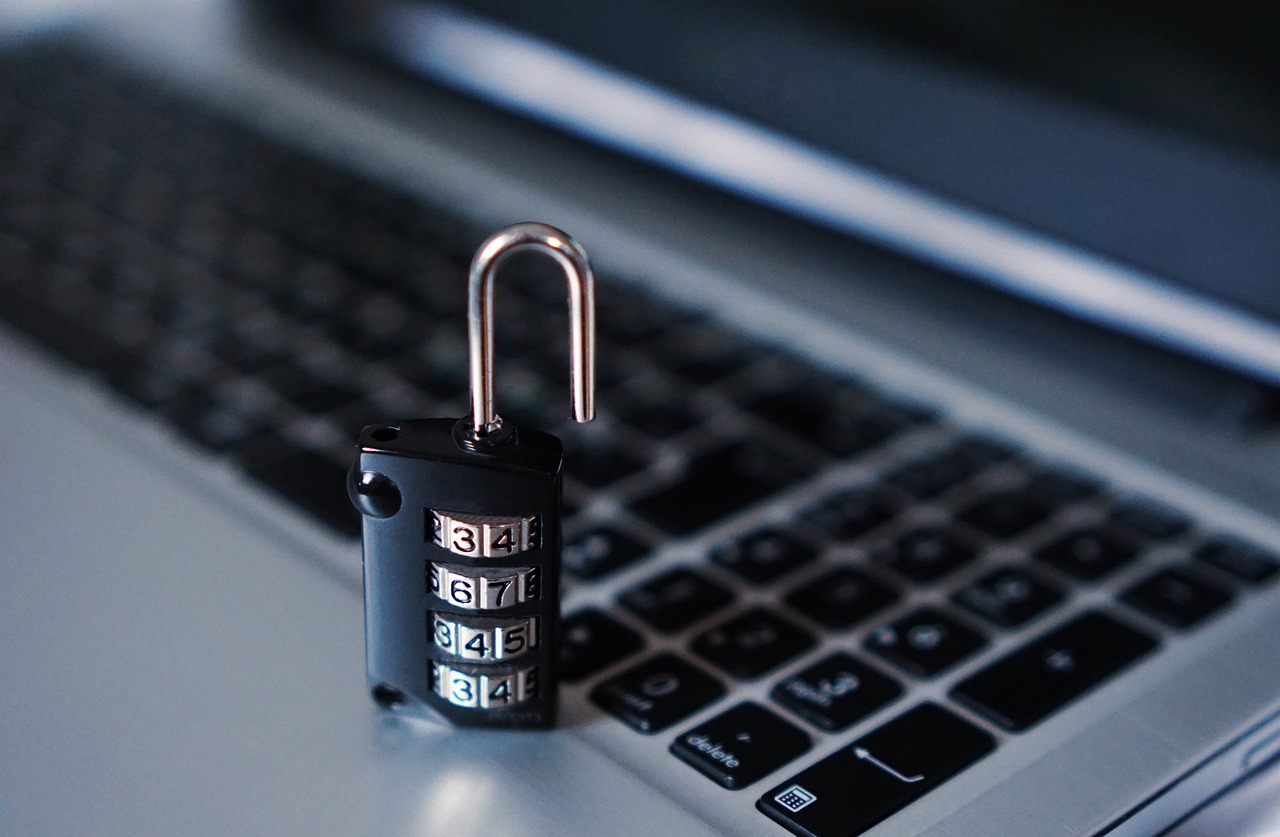
Benefits of Biometric Systems
In today's fast-paced digital world, the benefits of biometric systems are becoming increasingly clear, and they are transforming the way we think about security and convenience. Biometric systems leverage unique physical characteristics, such as fingerprints, facial recognition, and iris patterns, to authenticate users. This not only enhances security but also streamlines user experiences in a way that traditional methods simply cannot match. Imagine a world where you can access your bank account or unlock your smartphone without fumbling for passwords or keys—this is the promise of biometric technology.
One of the most significant advantages of biometric systems is their enhanced security. Unlike passwords, which can be forgotten, stolen, or hacked, biometric traits are inherently unique to each individual. This makes them far more difficult to replicate or forge. For example, a fingerprint is as unique as a snowflake, and the chances of two individuals having the same fingerprint are astronomically low. This level of security is crucial in preventing identity theft and unauthorized access to sensitive information.
Moreover, biometric systems offer convenience for users. Think about the last time you struggled to remember a complex password or searched for your keys. Biometric authentication eliminates these hassles by allowing users to gain access with just a touch or a glance. For instance, many smartphones now feature facial recognition technology, enabling users to unlock their devices simply by looking at them. This not only saves time but also enhances the overall user experience.
When we consider the real-world applications of biometric technology, the benefits become even more apparent. Various sectors are adopting biometric systems to enhance security and improve service delivery. For instance:
- Banking: Many banks now use fingerprint or facial recognition for secure transactions, reducing the risk of fraud.
- Healthcare: Biometric systems are used to verify patient identities, ensuring that sensitive medical information is only accessible to authorized personnel.
- Law Enforcement: Police departments utilize biometric databases to identify suspects and solve crimes more efficiently.
In summary, the benefits of biometric systems are multifaceted. They provide a higher level of security compared to traditional methods, offer unparalleled convenience for users, and have real-world applications that demonstrate their effectiveness across various sectors. As we continue to embrace this technology, it's essential to remain aware of the balance between security and privacy, ensuring that the advantages of biometric systems do not come at the cost of personal information safety.
- What are biometric systems? Biometric systems use unique physical characteristics for user identification and authentication.
- How secure are biometric systems? They are generally more secure than traditional methods since biometric traits are difficult to replicate.
- Can biometric data be hacked? While biometric data is more secure, it is not completely immune to hacking. Proper security measures are essential.
- What are the most common types of biometric systems? The most common types include fingerprint recognition, facial recognition, and iris scanning.

Enhanced Authentication
When it comes to safeguarding our identities, through biometric systems represents a significant leap forward. Unlike traditional methods, such as passwords or PINs, which can easily be forgotten, stolen, or hacked, biometric traits are inherently unique to each individual. Think about it: your fingerprint is as distinctive as your personality. This uniqueness makes biometric authentication a powerful tool in the fight against identity theft and unauthorized access.
One of the most compelling aspects of biometric security is its robustness. For instance, while a thief might guess or steal your password, they can't easily replicate your fingerprint or iris scan. This difficulty in replication significantly raises the bar for would-be intruders. In fact, biometric systems utilize advanced algorithms that analyze the specific characteristics of your biometric data, making it exponentially harder for someone to impersonate you. Here’s a quick comparison to illustrate this point:
| Authentication Method | Security Level | Ease of Use | Risk of Theft |
|---|---|---|---|
| Password | Low | Moderate | High |
| PIN | Moderate | High | Medium |
| Fingerprint | High | Very High | Low |
| Iris Scan | Very High | High | Very Low |
As seen in the table, biometric methods like fingerprint and iris scanning offer a much higher security level compared to traditional methods. This enhanced security is crucial in sectors where sensitive data is involved, such as banking and healthcare. Imagine walking into a bank and instead of fumbling for your ID or card, you simply place your finger on a scanner. It’s quick, efficient, and most importantly, secure.
Moreover, biometric systems are designed to learn and adapt. For instance, if your fingerprint is partially damaged, the system can still authenticate you by recognizing the remaining unique patterns. This adaptability ensures that users can maintain access even in less-than-ideal conditions. It's like having a personal security guard who knows you so well that they can recognize you even when you're not at your best!
However, it’s essential to recognize that while biometric authentication offers enhanced security, it is not entirely foolproof. As technology evolves, so do the techniques used by cybercriminals. Therefore, it’s crucial for organizations to continually update their systems and implement additional layers of security, such as two-factor authentication, to provide an even more fortified approach to identity verification.
In conclusion, enhanced authentication through biometric systems not only elevates security but also enhances user convenience. It’s a win-win situation where you can feel secure in your identity while enjoying a seamless access experience. As we move further into a digital world, embracing these technologies will be key in protecting our personal information.
- What are biometric systems? Biometric systems utilize unique physical characteristics, such as fingerprints or facial recognition, for identification and authentication.
- Are biometric systems completely secure? While they offer enhanced security compared to traditional methods, no system is entirely foolproof. Continuous updates and additional security measures are recommended.
- How does biometric authentication work? Biometric authentication analyzes unique traits, such as fingerprints or iris patterns, and compares them against stored data to verify identity.
- What are the privacy concerns associated with biometric data? The main concerns revolve around data breaches and the potential misuse of sensitive biometric information.

Convenience for Users
In today’s fast-paced world, convenience is king. We all crave solutions that make our lives easier, and biometric systems deliver just that. Imagine a scenario where you no longer have to fumble around for your keys or struggle to remember complex passwords. With biometric security, your unique physical traits—like your fingerprint, facial features, or even your iris—become your key to access. This is not just a futuristic dream; it’s a reality that is transforming how we interact with technology on a daily basis.
One of the most significant advantages of biometric systems is their ability to streamline user interactions. Picture this: you walk up to your smartphone, and with a simple glance or a touch, it unlocks instantly. No more typing, no more delays. This level of ease not only enhances the user experience but also encourages more people to adopt these technologies. After all, who wouldn’t prefer a quick and seamless method of authentication over the tediousness of remembering numerous passwords?
Moreover, biometric systems can significantly reduce the risk of unauthorized access. Traditional security measures, such as passwords, can be easily forgotten, stolen, or hacked. In contrast, biometric data is inherently personal and difficult to replicate. For instance, while someone might guess or steal your password, they can’t easily replicate your fingerprint or your face. This aspect not only enhances security but also boosts user confidence in the system.
Additionally, biometric solutions can be integrated into various devices and environments. From smartphones and laptops to security systems in homes and offices, the versatility of biometric technology is impressive. Here’s a quick overview of some common applications:
| Device/Application | Biometric Type | Benefit |
|---|---|---|
| Smartphones | Fingerprint, Facial Recognition | Quick access, enhanced security |
| Banking | Iris Scanning, Voice Recognition | Secure transactions, fraud prevention |
| Healthcare | Fingerprint, Facial Recognition | Patient identification, data protection |
| Law Enforcement | Fingerprint, Facial Recognition | Criminal identification, evidence gathering |
In conclusion, the convenience offered by biometric systems is a game-changer. They not only simplify our interactions with technology but also provide robust security measures that traditional methods struggle to match. As we continue to embrace this digital age, it’s clear that biometric solutions will play an essential role in shaping how we secure our identities and access our devices. So, why not take advantage of this innovative technology and experience the convenience for yourself?
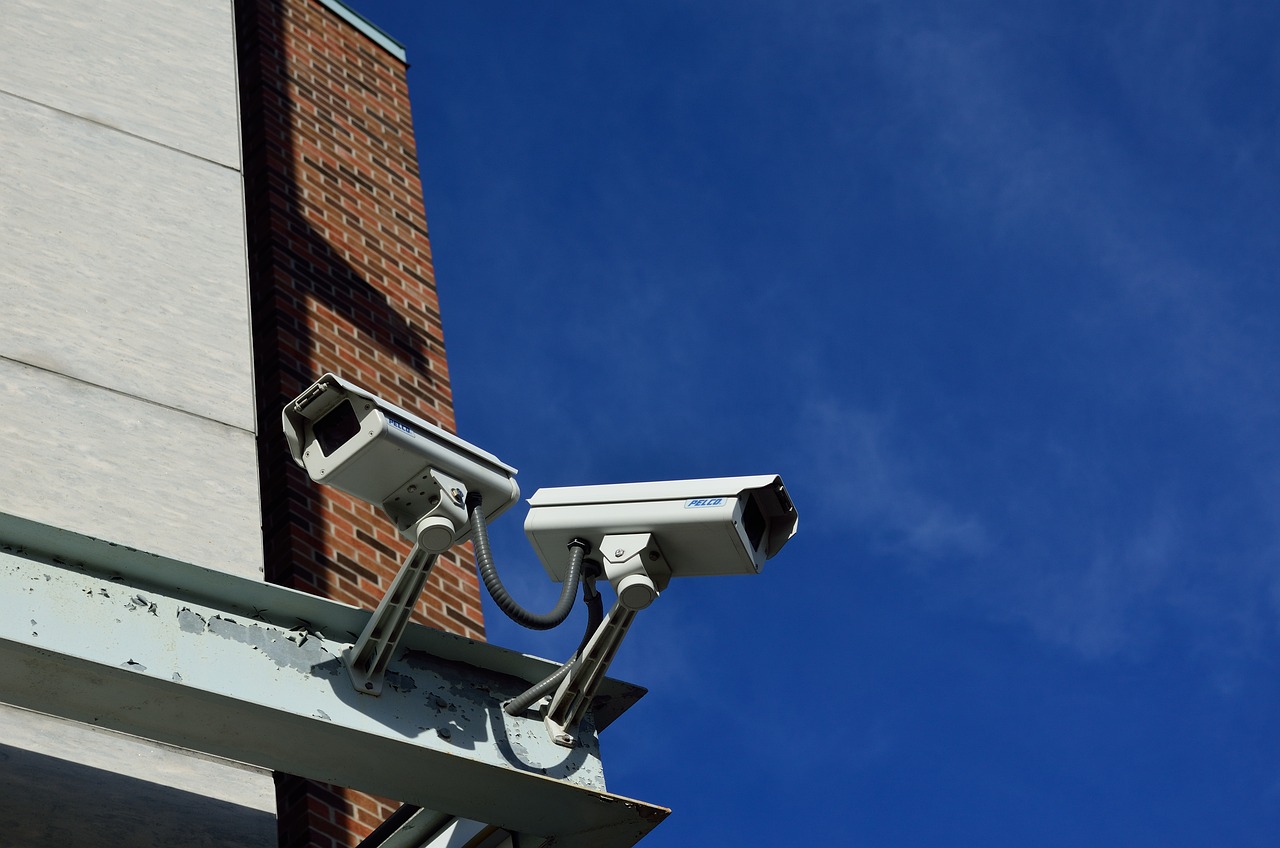
Real-World Applications
Biometric technology is not just a futuristic concept; it's already making waves across various industries, transforming how we secure sensitive information and streamline access. From banking to healthcare, the applications of biometric systems are as diverse as they are impactful. For instance, in the financial sector, banks are increasingly adopting fingerprint recognition and facial recognition systems to enhance the security of transactions. Imagine walking into a bank and instead of fumbling for your ID or card, you simply smile at a camera and, voilà, you’re recognized and granted access!
In healthcare, biometric systems are being utilized to ensure that patient records are accessed only by authorized personnel. Hospitals are implementing iris scanning technology to verify the identity of medical staff, ensuring that sensitive patient information remains confidential. This not only protects patient privacy but also streamlines the workflow, allowing healthcare providers to focus more on patient care rather than administrative tasks.
Law enforcement agencies are also leveraging biometric systems for crime prevention and solving cases. Facial recognition technology is being used in public spaces to identify suspects, track down missing persons, and enhance overall public safety. The ability to quickly analyze and compare faces against a database can make a significant difference in emergency situations. However, this application also raises questions about privacy and surveillance, highlighting the need for a balanced approach.
Furthermore, the retail sector is exploring biometric systems to improve customer experience. For example, some stores are experimenting with palm vein recognition, allowing customers to pay for their purchases simply by scanning their palm. This not only speeds up the checkout process but also reduces the risk of fraud, as palm vein patterns are unique to each individual and incredibly difficult to replicate.
To summarize, the real-world applications of biometric technology are vast and varied, with each sector finding innovative ways to enhance security and improve user experience. Here’s a quick overview of some key sectors utilizing biometric systems:
| Sector | Biometric Technology Used | Application |
|---|---|---|
| Banking | Fingerprint, Facial Recognition | Secure transactions and account access |
| Healthcare | Iris Scanning | Access to patient records |
| Law Enforcement | Facial Recognition | Identifying suspects and enhancing public safety |
| Retail | Palm Vein Recognition | Faster, secure checkout process |
As we continue to integrate biometric systems into our daily lives, it’s essential to weigh the benefits against the potential risks. The convenience and security offered by these technologies are undeniable, but they also necessitate a conversation about privacy and ethical usage. The balance between security and individual rights will be a pivotal topic as biometric technology evolves.

Potential Privacy Concerns
As we embrace the convenience and security of biometric systems, it’s crucial to acknowledge the that accompany their use. While biometric security offers enhanced protection against unauthorized access, it also raises significant questions about how our personal data is collected, stored, and utilized. Imagine handing over a key to your home that not only opens the door but also reveals every detail about your life. This analogy encapsulates the essence of biometric data—it's not just a password; it's a part of you.
One of the most pressing issues is the risk of data breaches. Unlike passwords, which can be changed, biometric traits such as fingerprints or facial recognition patterns are immutable. If such sensitive data is compromised, individuals have little recourse. The implications of a stolen fingerprint could lead to identity theft on a scale we have yet to fully comprehend. For instance, a breach in a biometric database could expose millions of users to potential fraud, making it imperative to implement robust security measures.
Furthermore, the misuse of biometric information poses a significant threat. In the wrong hands, biometric data can be weaponized for surveillance or profiling. Governments and corporations may exploit this information to monitor individuals without their consent, leading to a society where privacy is a luxury rather than a right. The chilling effect of such surveillance can stifle free expression and inhibit personal freedoms. It’s essential to ask ourselves: at what cost do we prioritize security over privacy?
Additionally, the lack of transparency surrounding biometric data practices can create distrust among users. Many individuals may not fully understand how their data is collected, who has access to it, and how it is protected. This opacity can lead to skepticism about the intentions of organizations that implement biometric systems. To foster trust, companies must be transparent about their data practices and provide clear information on how they safeguard users' biometric information.
In conclusion, while biometric security systems offer exciting advancements in protecting our identities, they also raise significant privacy concerns that cannot be ignored. As we move forward in this digital age, it’s essential to strike a balance between enhancing security and protecting individual privacy. Stakeholders, including tech companies, regulators, and users, must work together to establish best practices that prioritize both security and privacy, ensuring that our biometric data remains safe and secure.
- What are biometric security systems? Biometric security systems use unique physical characteristics, like fingerprints or facial recognition, for identification and access control.
- What are the main privacy concerns with biometric data? The main concerns include data breaches, misuse of information, and lack of transparency regarding data practices.
- How can organizations protect biometric data? Organizations should implement strong security measures, ensure data encryption, and comply with data protection regulations to safeguard biometric information.
- Are there regulations governing biometric data? Yes, various regulations, such as GDPR, outline how organizations can collect and use biometric data while protecting individuals' privacy rights.
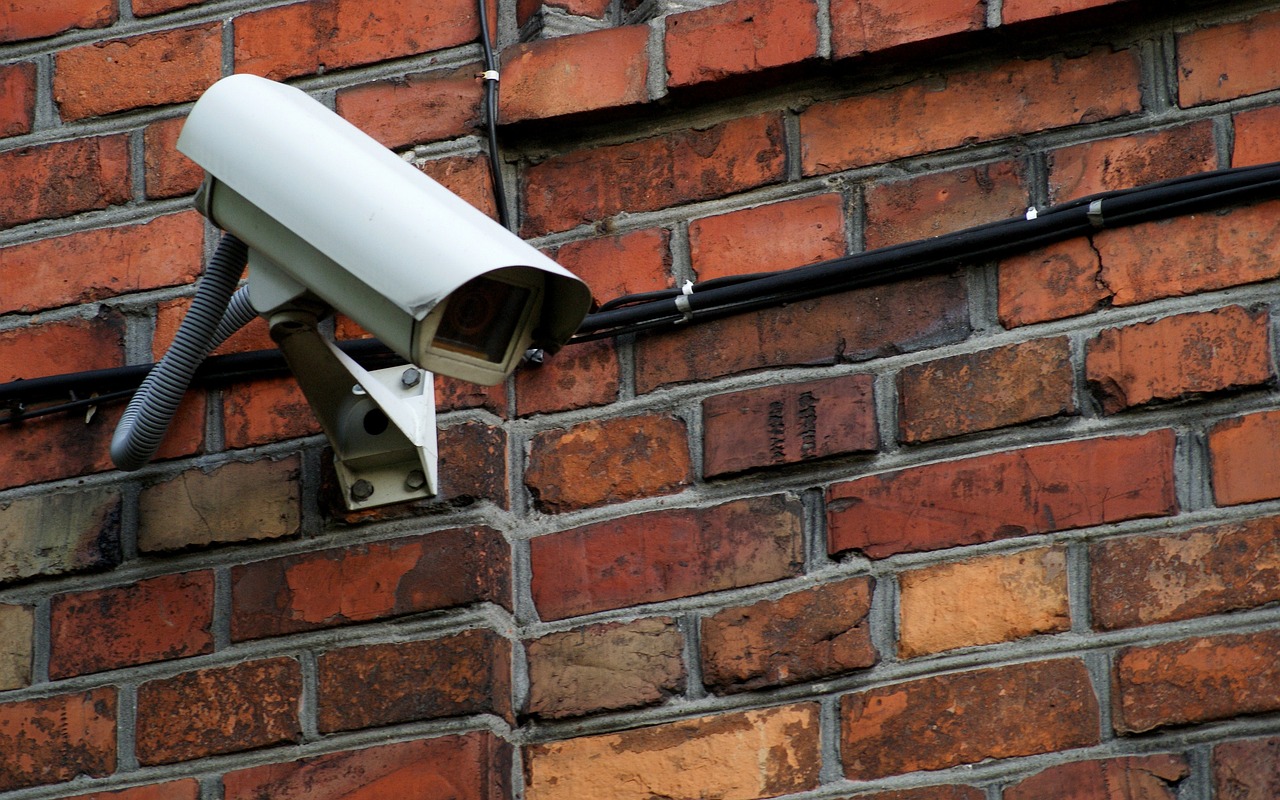
Regulatory Frameworks
In today's digital landscape, where biometric security systems are becoming increasingly prevalent, understanding the that govern their use is essential. These frameworks are designed to protect individuals' privacy rights while allowing organizations to implement biometric technologies effectively. The complexity of these regulations can be daunting, but they serve a crucial purpose in ensuring that biometric data is handled responsibly and ethically.
The legal landscape surrounding biometric data varies significantly across different regions. For instance, in the European Union, the General Data Protection Regulation (GDPR) has set a high standard for data protection, including biometric information. Under GDPR, biometric data is classified as sensitive personal data, which means that organizations must obtain explicit consent from individuals before collecting or processing their biometric information. This regulation not only enhances privacy but also holds organizations accountable for safeguarding the data they collect.
In the United States, the regulatory environment is less uniform. While there is no federal law specifically governing biometric data, several states have enacted their own laws. For example, Illinois has implemented the Biometric Information Privacy Act (BIPA), which requires companies to obtain informed consent before collecting biometric data and mandates strict data retention policies. Such state-specific regulations highlight the importance of understanding local laws when implementing biometric security measures.
As biometric technology continues to evolve, so do the regulatory frameworks that govern its use. Organizations must stay informed about the latest developments in privacy laws and regulations to ensure compliance. Failure to adhere to these regulations can result in severe penalties, including hefty fines and reputational damage. Therefore, it is critical for businesses leveraging biometric systems to conduct regular audits and training sessions to ensure that all employees understand the legal implications of handling biometric data.
To give you a clearer picture of the regulatory landscape, here's a brief comparison of some key regulations affecting biometric data:
| Regulation | Region | Key Requirements |
|---|---|---|
| GDPR | European Union | Explicit consent, data minimization, right to access, and deletion |
| BIPA | Illinois, USA | Informed consent, data retention policies, and disclosure of data practices |
| CCPA | California, USA | Consumer rights to access and delete personal data, and opt-out of data selling |
Organizations must also consider the implications of international regulations if they operate across borders. For instance, compliance with GDPR is necessary for any organization that processes the data of EU citizens, regardless of where the organization is based. This cross-jurisdictional aspect complicates the regulatory landscape, making it imperative for businesses to have a robust compliance strategy in place.
In summary, the regulatory frameworks surrounding biometric security are intricate and constantly evolving. Organizations must navigate these complexities carefully to protect individual privacy rights while reaping the benefits of biometric technologies. By staying informed and compliant, businesses can foster trust with their users and ensure that their biometric systems are not only effective but also ethical.
- What is biometric data? Biometric data refers to unique physical characteristics, such as fingerprints, facial recognition, or iris patterns, used for identification and authentication purposes.
- Why is biometric data considered sensitive? Biometric data is considered sensitive because it is unique to each individual and, if compromised, can lead to identity theft and privacy violations.
- How does GDPR affect biometric data collection? GDPR requires organizations to obtain explicit consent from individuals before collecting biometric data and imposes strict regulations on data handling and processing.
- What should organizations do to comply with biometric regulations? Organizations should conduct regular audits, ensure employee training on data privacy, and implement strong data protection policies.
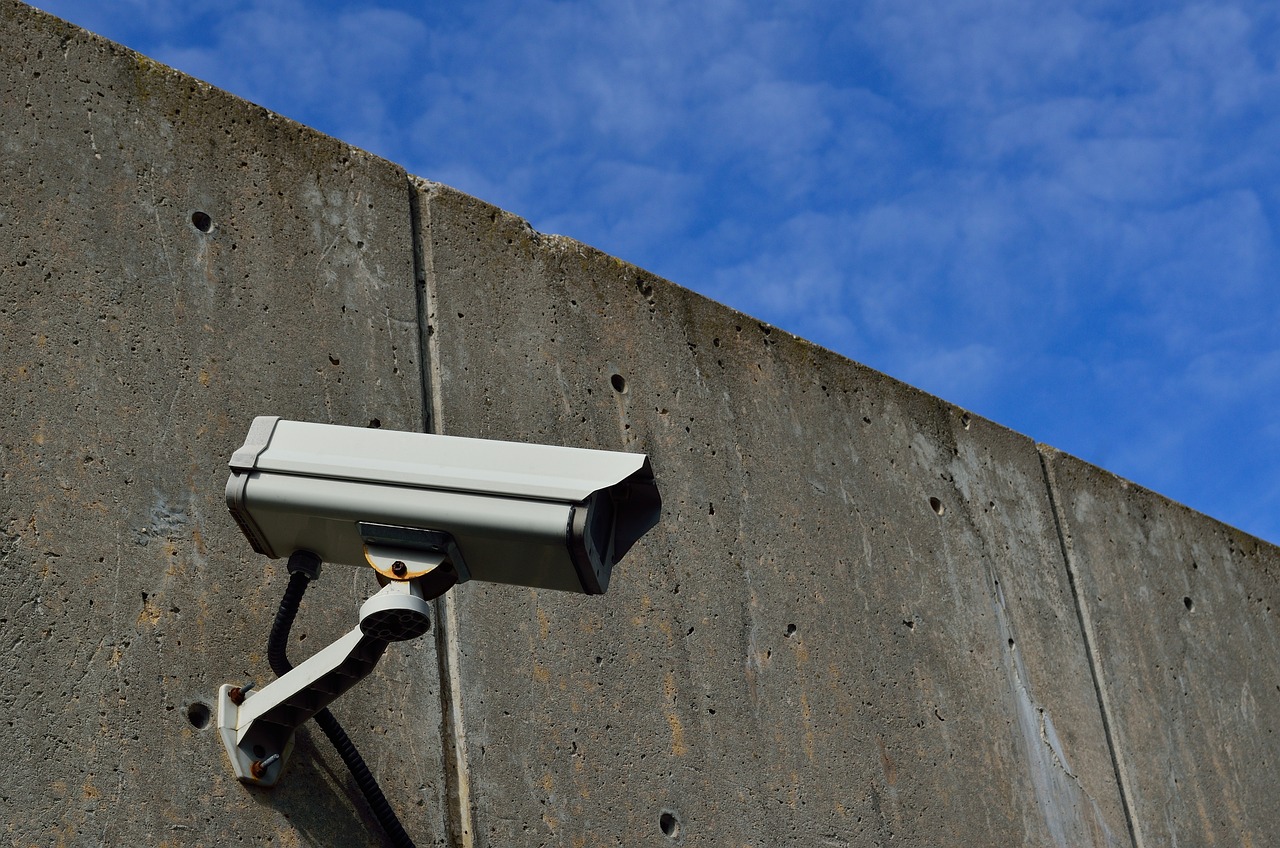
Data Protection Laws
Data protection laws are essential in the realm of biometric security, as they govern how organizations collect, store, and use biometric data. With the rise of technology, the **need for robust legal frameworks** has become increasingly apparent. These laws aim to protect individuals' privacy rights while ensuring that businesses can utilize biometric systems effectively. One of the most significant regulations in this area is the General Data Protection Regulation (GDPR), which was implemented in the European Union in 2018. GDPR sets a high standard for data protection, influencing not only European companies but also any organization that handles the personal data of EU citizens.
Under GDPR, biometric data is classified as a special category of personal data. This means that organizations must adhere to stricter rules when processing such information. For instance, explicit consent from individuals is required before collecting their biometric data, which includes fingerprints, facial recognition, and iris scans. Additionally, organizations must ensure that they have adequate security measures in place to protect this sensitive information from unauthorized access or breaches.
Another important aspect of data protection laws is the concept of data minimization. This principle dictates that organizations should only collect and process the minimum amount of biometric data necessary for their specific purposes. By limiting the scope of data collection, the risk of misuse or data breaches is significantly reduced. Furthermore, individuals have the right to access their biometric data and can request its deletion under certain circumstances.
To illustrate the impact of data protection laws on biometric security, consider the following table that summarizes key aspects of GDPR relevant to biometric data:
| Aspect | Description |
|---|---|
| Consent | Explicit consent is required for the collection of biometric data. |
| Data Minimization | Only the necessary amount of biometric data should be collected. |
| Access Rights | Individuals have the right to access and request deletion of their data. |
| Security Measures | Organizations must implement adequate security to protect biometric data. |
As we move forward, the landscape of biometric security will continue to evolve, and so will the laws that govern it. Countries around the world are beginning to adopt their own data protection regulations, reflecting the growing recognition of the importance of privacy in the digital age. For instance, the California Consumer Privacy Act (CCPA) in the United States grants residents specific rights regarding their personal information, including biometric data. Such regulations are crucial in ensuring that individuals remain in control of their personal information, particularly as biometric technologies become more prevalent.
In conclusion, understanding data protection laws is vital for both organizations implementing biometric security measures and individuals whose data is being collected. These laws not only help safeguard privacy rights but also foster trust between consumers and businesses. As biometric technology advances, staying abreast of legal developments will be key in navigating this complex landscape.
- What is biometric data? Biometric data refers to unique physical characteristics used for identification, such as fingerprints, facial recognition, and iris scans.
- How does GDPR affect biometric data? GDPR requires explicit consent for collecting biometric data and mandates strict security measures to protect it.
- Can I request the deletion of my biometric data? Yes, under data protection laws, individuals have the right to request access to and deletion of their biometric data.
- What are the consequences of non-compliance with data protection laws? Organizations that fail to comply with data protection laws may face significant fines and legal repercussions.
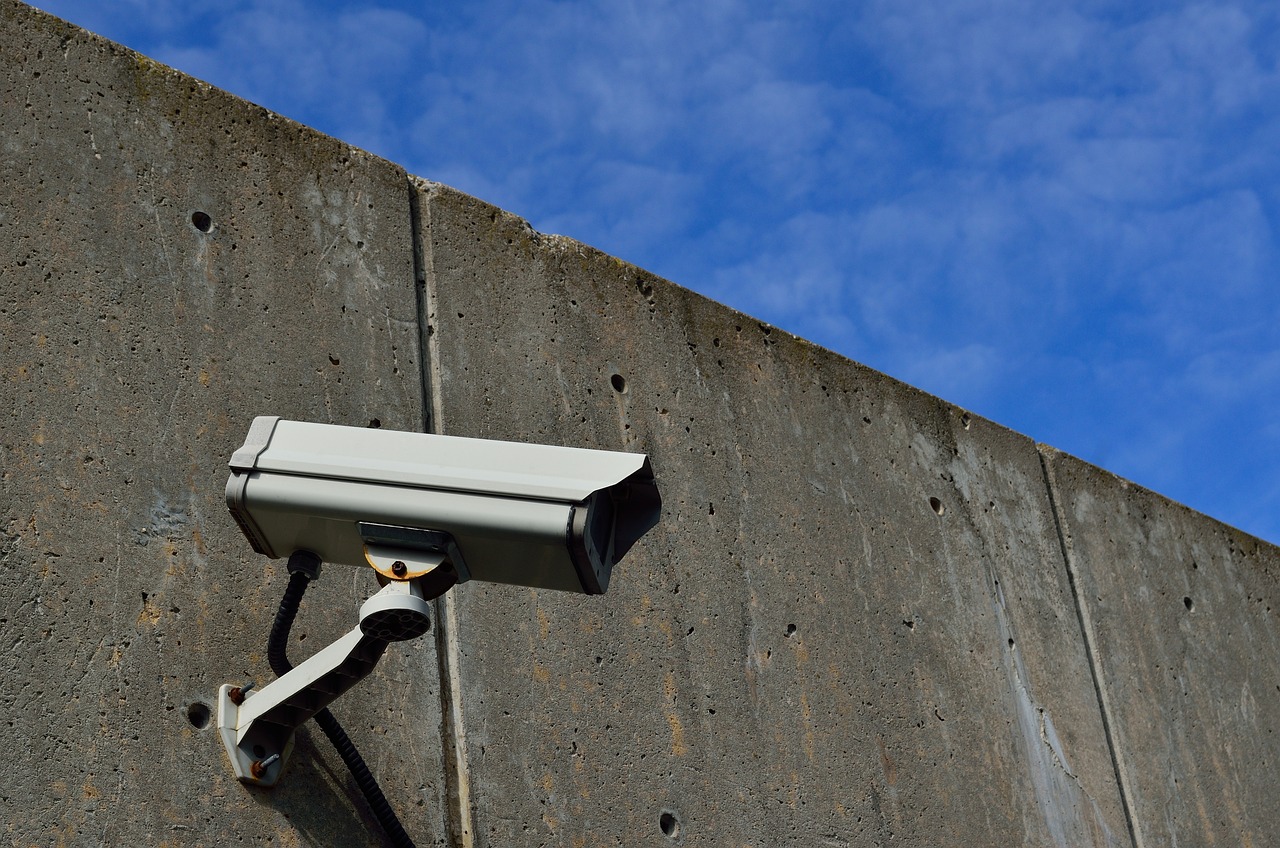
Future of Biometric Security
This article explores the intersection of biometric security systems and privacy concerns, highlighting their benefits, potential risks, and best practices for safeguarding personal information in an increasingly digital world.
Biometric security utilizes unique physical characteristics for identification. This section will cover various types of biometric systems, including fingerprint, facial recognition, and iris scanning, and their applications in enhancing security.
Biometric systems offer numerous advantages, such as increased security, convenience, and efficiency. This section will discuss how these systems improve user experience and reduce the likelihood of unauthorized access.
Biometric authentication provides a higher level of security compared to traditional methods. Here, we will examine how biometric traits are more difficult to replicate and the implications for identity theft prevention.
Users benefit from the ease of access that biometric systems provide. This subsection will highlight how biometric solutions simplify user interactions and reduce the need for passwords or physical keys.
Biometric technology is employed across various sectors, including banking, healthcare, and law enforcement. This section will explore specific case studies demonstrating the effectiveness of biometric systems in real-world scenarios.
Despite their advantages, biometric systems raise significant privacy issues. This section will delve into the risks associated with data breaches and the misuse of biometric information.
Understanding the legal landscape surrounding biometrics is crucial. This section will outline existing regulations and guidelines that govern the use of biometric data to protect individuals' privacy rights.
Data protection laws, such as GDPR, play a vital role in regulating biometric data. This subsection will explain how these laws impact organizations that implement biometric security measures.
The is not just about enhancing existing technologies; it's about reimagining how we interact with our digital environments. As technology advances, we can expect to see a surge in multi-modal biometric systems that combine different types of biometric data, such as fingerprints, facial recognition, and voice patterns. This integration will lead to even more robust security measures, making it increasingly difficult for unauthorized individuals to gain access.
Moreover, the rise of artificial intelligence (AI) and machine learning will significantly enhance biometric systems. These technologies will allow for real-time analysis and decision-making, improving the accuracy and speed of biometric authentication processes. For instance, imagine walking into a bank, and the system recognizes you instantly, not just by your face but also by your voice and unique gait. This level of sophistication will redefine convenience and security.
However, with these advancements come new challenges. As biometric data becomes more prevalent, the risk of data breaches increases. Cybercriminals are constantly evolving their tactics, and biometric systems must adapt to stay one step ahead. It's crucial for organizations to implement stringent security measures and continuously update their systems to protect sensitive biometric information.
Additionally, the ethical implications of biometric technology cannot be ignored. As we move forward, questions about consent, data ownership, and surveillance will become increasingly important. Society must engage in discussions about how to balance the benefits of biometric security with the need for personal privacy.
In conclusion, the future of biometric security holds great promise but requires careful consideration of both technological advancements and ethical implications. As we embrace these innovations, we must also prioritize the protection of individual privacy rights, ensuring that biometric systems serve to enhance security without compromising our freedoms.
- What are biometric security systems? Biometric security systems use unique physical characteristics, such as fingerprints or facial recognition, to identify individuals and grant access.
- Are biometric systems safe? While biometric systems offer enhanced security, they are not immune to risks such as data breaches. It’s essential to implement strong security measures.
- How does AI impact biometric security? AI enhances biometric systems by enabling real-time analysis and improving accuracy, making them more efficient and secure.
- What are the privacy concerns related to biometric data? Privacy concerns include potential misuse of biometric data, lack of consent, and risks associated with data breaches.
Frequently Asked Questions
- What is biometric security?
Biometric security refers to the use of unique physical characteristics, such as fingerprints, facial recognition, or iris patterns, to identify and authenticate individuals. It enhances security by providing a more reliable form of identification compared to traditional methods like passwords or PINs.
- What are the benefits of using biometric systems?
Biometric systems offer several advantages, including increased security, convenience, and efficiency. They help reduce unauthorized access and simplify user interactions by eliminating the need for passwords or physical keys, making it easier for users to access their accounts and services.
- Are biometric systems safe from hacking?
While biometric systems are generally more secure than traditional methods, they are not entirely immune to hacking. Cybercriminals can potentially exploit vulnerabilities in the system or database. However, the unique nature of biometric traits makes them harder to replicate, providing a significant layer of protection against identity theft.
- What privacy concerns are associated with biometric data?
Privacy concerns related to biometric data include the potential for data breaches, misuse of personal information, and unauthorized surveillance. If biometric data is stolen or mismanaged, it can lead to serious privacy violations, making it crucial to implement strong data protection measures.
- How is biometric data regulated?
The regulation of biometric data varies by region, with laws like the General Data Protection Regulation (GDPR) in Europe setting strict guidelines for data collection, storage, and processing. Organizations must comply with these regulations to protect individuals' privacy rights and ensure responsible use of biometric information.
- What industries are using biometric technology?
Biometric technology is being utilized across various industries, including banking, healthcare, law enforcement, and even travel. For instance, banks use biometric authentication for secure transactions, while healthcare providers may use it to safeguard patient records and ensure access control.
- What does the future hold for biometric security?
The future of biometric security is promising, with ongoing advancements in technology leading to more sophisticated and secure systems. Emerging trends, such as multi-modal biometrics (using multiple biometric traits) and AI-driven solutions, are likely to shape the landscape, enhancing both security and user experience.



















